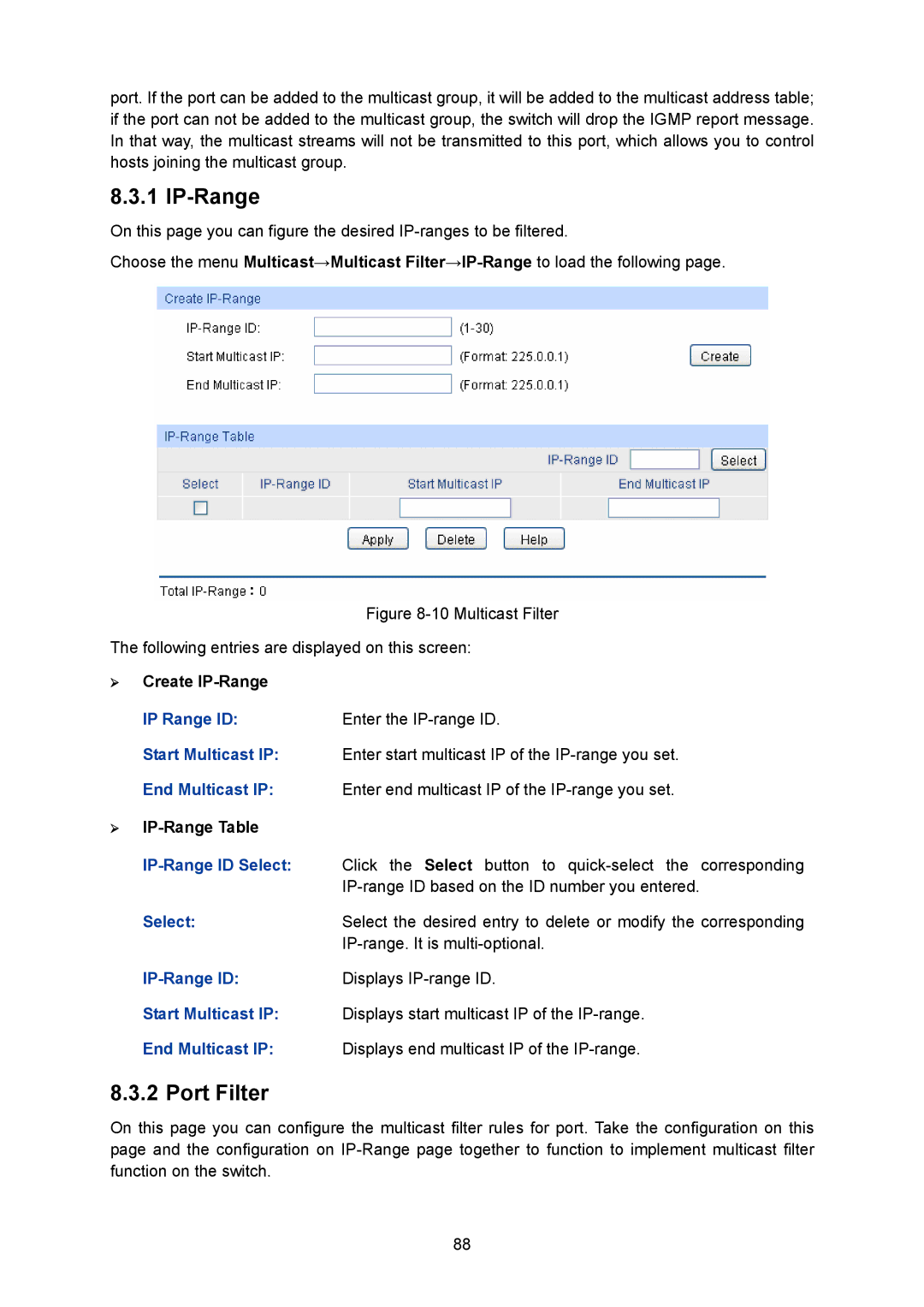
port. If the port can be added to the multicast group, it will be added to the multicast address table; if the port can not be added to the multicast group, the switch will drop the IGMP report message. In that way, the multicast streams will not be transmitted to this port, which allows you to control hosts joining the multicast group.
8.3.1 IP-Range
On this page you can figure the desired
Choose the menu Multicast→Multicast
Figure 8-10 Multicast Filter
The following entries are displayed on this screen:
¾ Create |
|
IP Range ID: | Enter the |
Start Multicast IP: | Enter start multicast IP of the |
End Multicast IP: | Enter end multicast IP of the |
¾IP-Range Table
Select: | Select the desired entry to delete or modify the corresponding |
| |
Displays | |
Start Multicast IP: | Displays start multicast IP of the |
End Multicast IP: | Displays end multicast IP of the |
8.3.2 Port Filter
On this page you can configure the multicast filter rules for port. Take the configuration on this page and the configuration on
88
